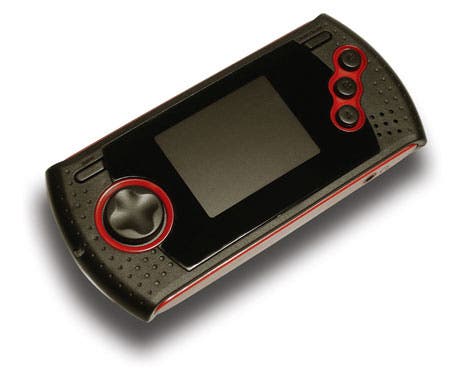SEGA Mega Drive Handheld
Still Mega nearly 20 years on?
SEGA's quite fond of its legacy, and so it should be. So much so, in fact, that president of SEGA of America, Simon Jeffery recently commented: "We're looking at Game Gear. The interest in digital delivery media and the iPhone has really caused us to look back to the past and the great golden days of SEGA gaming in all formats, not just the Genesis. So absolutely we're looking back there."
So what better time than for the SEGA Mega Drive 20 Games In One handheld to arrive on my desk for review? We can help Jeffery and company do their jobs for them and suss out which of the games in their back catalogue is ripe for a remake, while also giving you a fair idea whether to shell out for this natty little portable gaming system.
But first, let's talk about the system itself.
Licensed from SEGA and developed by ATGames, UK importer Blaze is happily promoting this intriguing piece of hardware for around GBP 29.99. The first thing to note is its size. At roughly 50 per cent smaller than the PSP, it's a dinky little thing and not much bigger than one of your old Mega Drive cartridges.
Of course, this isn't the first time a portable Mega Drive has been attempted. Although never officially released in PAL territories, the ill-fated SEGA Nomad was hardly what you'd call a handheld and guzzled batteries faster than Sonic could gather rings. Tom used to have one and says it didn't work half the time either [Thorough, incontrovertible research. More of this - Ed]. The Mega Drive handheld, by contrast, is light, comfortably fits in your pocket, and houses all the main functionality of a Mega Drive joypad: i.e. a directional pad, and A, B and C buttons, along with a Menu and Start button placed discreetly on the top left and right of the unit.
Mono sound is emitted from a single tiny (and predictably tinny) speaker built-in on the lower right side of the unit, while a headphone socket, positioned on the bottom edge, provides the best audio option. On the top edge, you've got a small volume control wheel, a power on/off switch and a handy TV-out port for those of you wanting to relive the 16-bit 'glory days' on a big screen.

In fact, the TV-out feature is both surprising and impressive. Surprising in that even mainstream handhelds don't generally bother, never mind budget ones made in China, and impressive in that the quality of the output signal is crisp and clear (despite being bog-standard composite), and also transmits fairly fuzzy sounding mono audio via a standard phono cable. Perhaps reflecting the rather cheap build quality, if you happen to move or disturb the cable in any way during play, a significant amount of interference appears on the screen. The trick is to hold the unit steady, but it's not ideal if you're getting in a bit of a flap during a boss encounter.
But perhaps hooking it up to a TV is missing the point. This unit has been designed with on-the-move play in mind, and boasts a decent-sized backlit LCD screen which does the games far more justice than blowing them up onto modern widescreen. Output is crisp and clear, and although some colour combinations of text can be a little difficult to read (unless you tilt the screen at a certain angle), the late '80s graphical grunt of SEGA's once-impressive tech comes across very favourably.
Power-wise, the only option is to unscrew the back panel and whack in three AAA batteries. It's a shame they didn't go for a rechargeable option, but you can't have everything. Happily, unlike the SEGA Nomad, you can actually take this unit on a trip in the knowledge that it won't run out of juice at a crucial stage. [And without bringing a suitcase. - Bitter Nomad-owning Ed]
In terms of the games, you get 20 first party offerings which span the entire lifespan of the console. Switching on the unit presents you with a simple menu system, and you have five games to choose from on each of the four pages. Pressing the Start button takes you to your game of choice, and from there it's a quick trip down memory lane to see how well or how badly these relics stand up to your harsh 21st Century gaze.

Luckily for you lot, we've already played and reviewed most of these on our long-running series of Virtual Console roundups. With most fresh in our minds, we've revisited our recent thoughts on the games so that you don't have to slog your way through our archive to find out.
In summary, most of the games are pretty average fodder, which only the most devoted Mega Drive retro apologist would eke enjoyment out of these days, along with some genuinely interesting forgotten gems like Flicky and Gain Ground. Sadly, some of the game that work best in two-player (such as Golden Axe) are denied that facility due to the inherent limitations of the device.
That said, for the money, you really can't complain. You get a nicely designed piece of hardware (with TV-out) and a stack of old titles to browse through for under thirty quid, and if you grew up with a Mega Drive under your telly, it's worth it for the novelty value alone. And let's not forget - in the context of most (13 to be precise) of these having been released via the Wii's Virtual Console channel individually at eye watering prices, that's not bad value at all.








